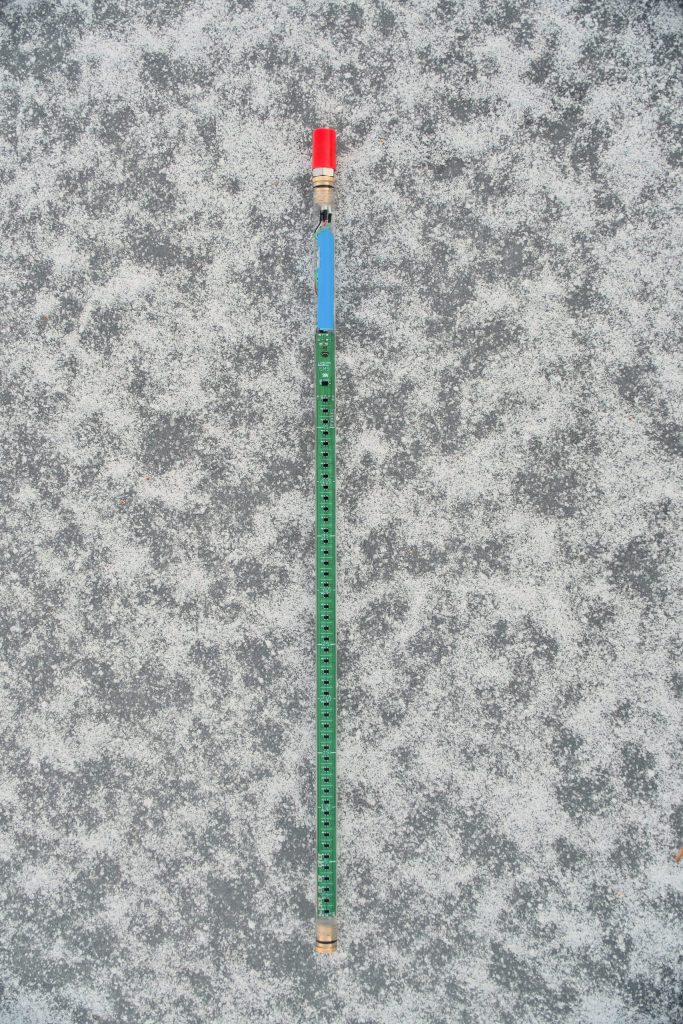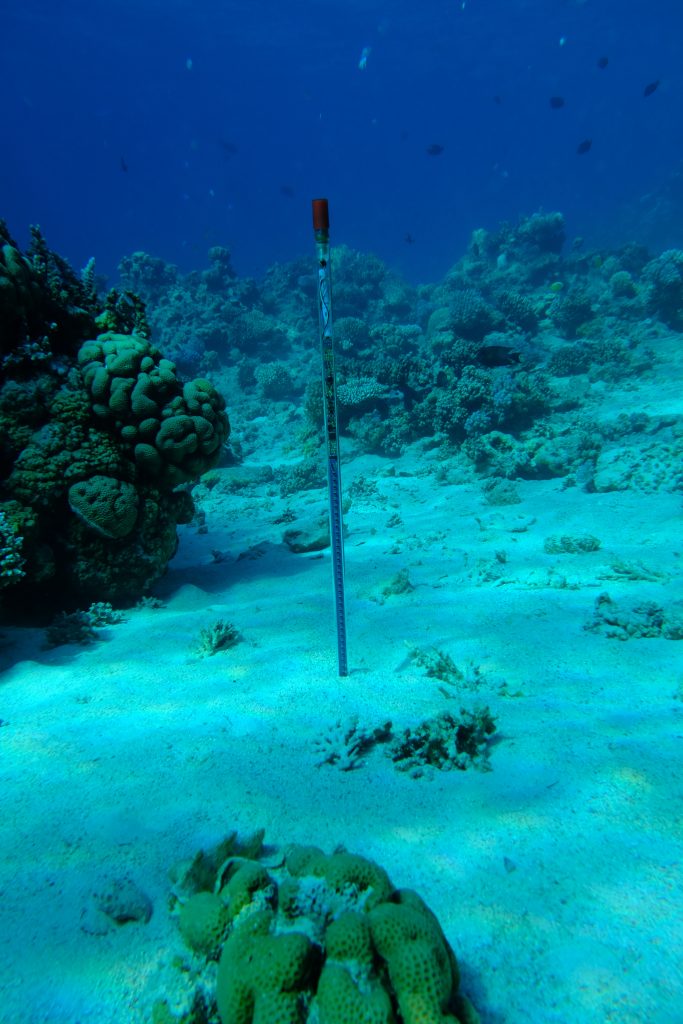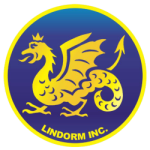The latest SediMeter™ has a novel sensor that allows the instrument to also be used above water in daytime. It has a longer and stackable sensor, each segment measuring 48 cm. The SM5 includes an improved ISO turbidimeter, while retaining the accelerometer from SM4. Refer to these pdf files for further details.
SM5A
The SM5A model has a sensor with 48 OBS detectors, 1 cm apart. It is housed in a thick-walled 20 mm diameter polycarbonate tube that is deployed without a holder tube. The SediMeter can be mounted on a platform, to a tripod, or stand-alone by pushing it down with the tip and tube provided with the SM5A-kit.
SM5B, SM5C…
If 48 cm is not sufficient, the SM5 allows several segments to be united in a single instrument for an overall active sensor length of 96 cm in SM5B, 144 cm in SM5C, etc. Contact us for a quote.


Features of the SediMeter™ SM5
The Principle
The SediMeter™ sensor was invented by Dr. Ulf Erlingsson in 1985 for detecting incipient sediment motion on the seafloor. It consists of a vertical array of optical backscatter detectors (OBS), or reflex detectors, operating in the near infrared band of the spectrum so as to become virtually immune to daylight under water. The original sensors had 16 OBS detectors. The SM2, SM3, and SM4 all have 36 OBS detectors, while the SM5 has 48 OBD detectors plus they are stackable. Also, it is both active and passive, providing immunity to ambient light above as well as below water.
The Modern Sensor
The sensor consists of 48 near infrared optical backscatter detectors (NIR OBS) spaced 1 cm apart. Turbidity is measured at 95 levels, 48 as straight backscatter and 47 as oblique backscatter (e.g. emitted from #1 and measured at #2). Furthermore, SM5 measures far oblique scatter in a third channel, without subtracting ambient light. This channel serves to detect air: by day it records the ambient sunlight, and by night it records the total reflection caused by the presence of air outside. In the free software, these three channels are visualised as a color image. The bed level is estimated with a precision of 1 mm under typical conditions, while the precision of the soil-to-air or snow-to-air level in sunshine has yet to be determined (although by sensor design it cannot be worse than 1 cm).
Trubidimeter
About 3 cm higher up there is an ISO style turbidity meter with NIR light, reflected 90 degrees. The laser in SM5 is feedback-controlled for higher signal stability than in SM4.
Accelerometer
The 5th generation SediMeter also has a 3D accelerometer for measuring tilt and vibration. The accelerometer has its own CPU that can trigger a measurement based on user-defined criteria, typically vibration.
Data Management
The SediMeter SM5 has a built-in memory that holds 32,786 records. The SediMeter SM5A or connected in a network of up to 255 units. Measurements can be initiated over the network, by the internal clock, or by the accelerometer, which can be set up to trigger as a result of vibrations. The internally timed logging interval is from 1 second to 24 hours.
Burst Sampling
The SM5 can make burst sampling with up to 255 per burst, at a rate of 0.125 Hz to 2 Hz. At the end of each measurement, the last record is automatically transmitted over cable, if connected, which provides the best of both worlds: Data storage internally for safety in case the communication is lost, and real-time data for monitoring. (This may be rate dependent, and all data may be sent at lower rates; it is subject to change in firmware and software.)
SM5: the 5th Generation, compared to SM4
The 5th generation SediMeter™, launched in 2025, added daylight capability and longer sensor length:
- 48 cm long sensor measuring 3 channels
- We offer custom sensors with more than one 48-cm section, for a total monitoring length of 96 cm, 144 cm, etc
- Ability to measure the incident NIR light individually on each level, thus enabling daytime measurements above water
- ISO 7027-conforming nephelometric turbidimeter with improved accuracy compared to SM4
- Accelerometer (though collecting less data than in SM4)
The SM4 remains active and offers other options that satisfy different mission criteria:
- 36 cm long sensor measuring 2 channels
- ISO 7027-conforming and EPA 180.1-compliant nephelometric turbidimeters
- Fluorescence sensors
- Luxmeter, visible light sensor
- 3D Accelerometer capable of 400 Hz measurements during many seconds
- UV anti-fouling
- Burst sampling at up to 20 Hz, with up to 255 samples per measurement
- Configurable accelerometer and sampling triggered by vibration and or free-fall
- SediSond sediment profiling mode (only SM4P)
The Original SediMeter
The original functional SediMeter™ prototype built by Ulf Erlingsson in 1985 had 16 OBS detectors controlled by a Z80 NMOS CPU. It measured the reflection using an 8-bit A/D converter and stored data on a 2 kB RAM chip. The lab test immediately became a success. The sensor was able to detect incipient sediment motion by reacting to the addition to a single grain of sand adjacent to the sensor. A small series of instruments were built with a CMOS processor and successfully deployed in the field work for Erlingsson’s doctoral thesis. He could show that sediment transport on the sea floor regularly occurred at significantly greater depths than previously assumed. The sensor was patented, the novelty being the ability to interpolate between the discreet detectors.
